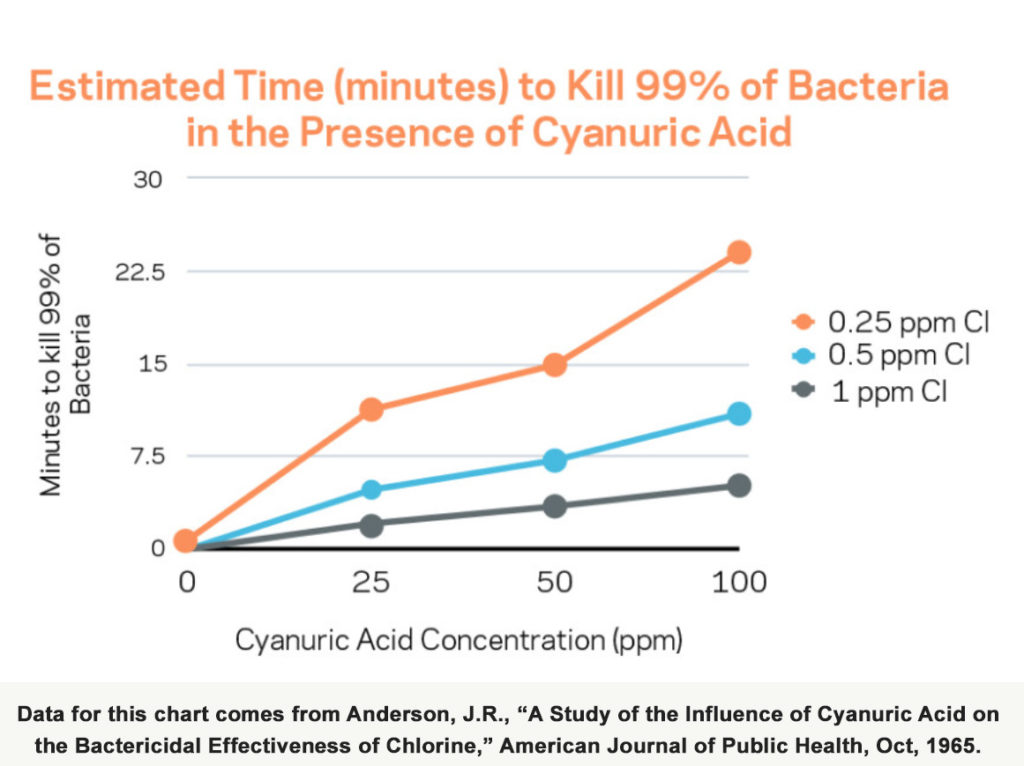With the summer outdoor pool season coming up, I thought a short discussion on the use of cyanuric acid (CYA) in swimming pools is in order. CYA is used in outdoor pools to prevent UV light degradation of chlorine and thereby help maintain chlorine levels. CYA is supplied and used as a stand alone chemical and is also a major component of the “stabilized” chlorine products, dichlor and trichlor. While CYA is widely used, its effects on pool water are not widely understood.
When used in moderation, CYA can help maintain chlorine levels in outdoor pools. However, the use of CYA at even modest levels has a significant downside; it inhibits the ability of chlorine to kill bacteria and increases kill time. Maintaining CYA at low levels in swimming pools can be difficult because the concentration of CYA builds over time. CYA does not evaporate and is not used up in performing its function. This can lead to a significant build up of the CYA concentration over time, especially if using dichlor or trichlor. For this reason, dichlor and trichlor should not be used in spas and indoor pools.
Though CYA levels of even a few ppm has an effect on chlorine function, it is clear that levels above 20-25ppm have a significant effect on the disinfection effectiveness of chlorine. While this effect is significantly detrimental in the killing of typical pool bacteria, it is particularly detrimental to the killing of algae and the inactivation of cryptosporidium during hyperchlorination conditions. In pools using any type of CYA, it is absolutely necessary to periodically monitor CYA levels and prevent high levels from accumulating in the pool water. If the CYA concentration reaches higher levels that are detrimental to chlorine disinfection, the only solution is to partially drain the pool and add fresh makeup water to reduce the CYA concentration
When using PoolMoss® and PoolMoss® Pro in residential and commercial outdoor pools, CWS has specific recommendations for the use of CYA. In northern climates, a low level (5ppm) of CYA can be used, if needed, for the first couple of weeks after start up. Once the water has been treated with The Moss™ for a few weeks, further use of CYA should be unnecessary to maintain desired free available chlorine (FAC) levels. For pools in warmer, more southern climates where pools are maintained year-round, a low level (10ppm) may be needed to maintain FAC levels throughout the pool season. In either case, it is important to monitor CYA levels by periodic testing to assure that CYA levels are kept low.
